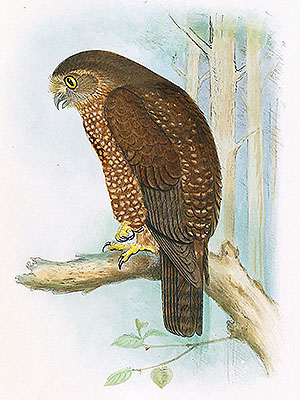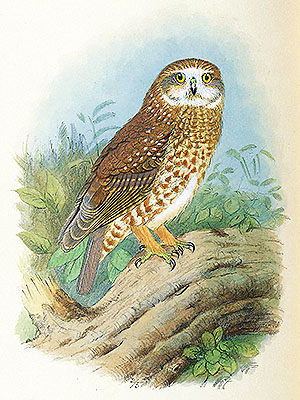Norfolk Island Boobook (Ninox novaeseelandiae ssp. undulata)
The Norfolk Island Boobook was described in 1801; it was endemic to Norfolk Island, where it inhabited the subtropical rainforests.
The taxon disappeared after the European settlers begun to clear the forests.
The population was reduced to a last surviving bird in 1986, a female bird named Miamiti, which died in 1996.
***
This female mated with a male boobook of the nominate race that had been introduced to Norfolk Island and produced some offspring, which again has given rise to the small population of hybrid boobooks that now inhabit this island.
*********************

Depiction from: ‘Gregory M. Mathews: The Birds of Norfolk & Lord Howe Islands and the Australian south polar quadrant with additions to “The Birds of Australia”. London: H. F. & G. Witherby 1928’
(public domain)
*********************
edited: 05.11.2021

